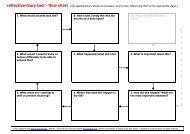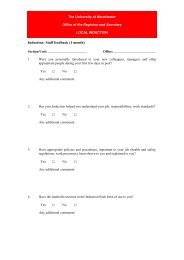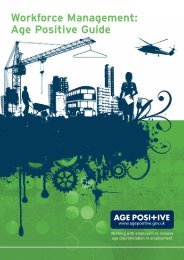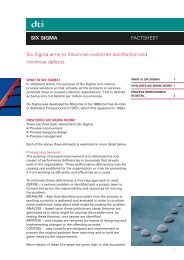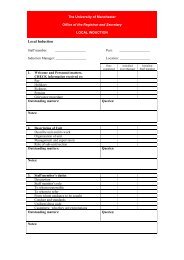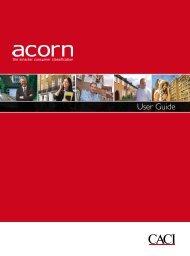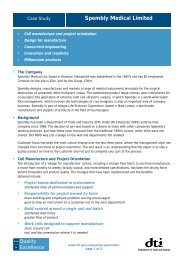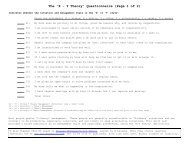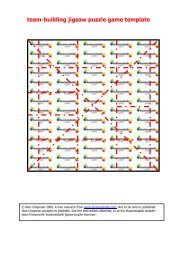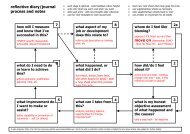Team Brief Guidelines - Businessballs
Team Brief Guidelines - Businessballs
Team Brief Guidelines - Businessballs
You also want an ePaper? Increase the reach of your titles
YUMPU automatically turns print PDFs into web optimized ePapers that Google loves.
TEAM BRIEF GUIDELINESii) THE AGENDAThe most important thing to remember is that no more than30% of the content of your team briefing should be madeup of items on the Core <strong>Brief</strong>. The majority of your briefingneeds to be made up of items of news from your own localarea of work. The following section ‘Preparing the Local<strong>Brief</strong>’ will tell you more about the kind of items to include.As with all meetings, it’s best to put in some preparationbeforehand. This might mean writing yourself an agenda sothat you know which items you’ll be talking about.Remember you will be delivering your brief verbally so youwant it to sound natural - not scripted. You could trywriting headings and elaborating with a few key pointsunder each heading - just to remind you what messagesyou want to get across.PrioritiesLook at the brief through your staff’s eyes. Once you’vedecided what you want to talk about sort the items into:• Must know information - details essential to the team andit’s day to day activities• Should know information - details which staff shouldknow about as a matter of course• Nice to know information - information which might notdirectly affect the day to day work of your team butwould still be useful to know aboutSequenceAre there any logical links between the various items on thebrief? Is so, put the agenda into the order which suits this.This will help you in your delivery.TimingWork out roughly how long each item should take andmake a note of this on your agenda so that you can keepan eye on the time as you work through the briefing.Remember to allow time for questions after each item.iii) PREPARING THE LOCAL BRIEFThe briefing which you deliver to your staff should be madeup of two elements - the information contained in the Core<strong>Brief</strong> from the Registrar (no more than 30% of yourbriefing) and a local brief with information relevant to yourown area of work.The Core <strong>Brief</strong>Your manager will tell you about the Core <strong>Brief</strong> which willhave been generated by the Registrar. This Core <strong>Brief</strong> willcontain items which may be of operational or strategicimportance to the administration as a whole.You should deliver this information to your team as part ofyour team briefing, however the information from the Core<strong>Brief</strong> should only make up around 30% of your teambriefing as a whole. Where possible you should try to makethe information contained within the Core <strong>Brief</strong> as relevantto your team as possible. If the information in the Core<strong>Brief</strong> is not relevant to your area of work then just mentionit but do not dwell on it.The Local <strong>Brief</strong>The majority of your team briefing should be made up oflocal information which is relevant to your team. Here aresome pointers to get you thinking about the kind of thingsto include in your local brief.A good way to think about your brief is to split it up intothe four Ps:PeoplePromotionsAppointmentsRetirements/leaversVisitorsSuccess storiesChanged locations/functionsPoints For ActionNew and ongoing projects/activitiesSpecial eventsHealth and Safety issuesBuilding worksWork standardsUpcoming deadlinesProgressFigures, returns, numbersMarketingSuccess storiesQuality issuesCompleted projects/activitiesPolicy IssuesHuman Resources policiesStudent recruitment and retention policiesHealth and Safety policy4



